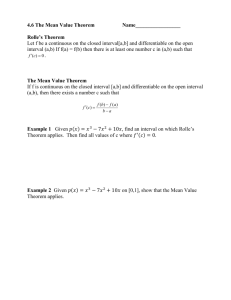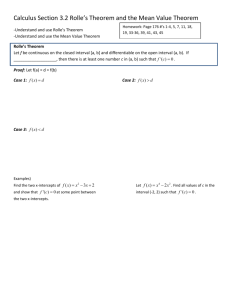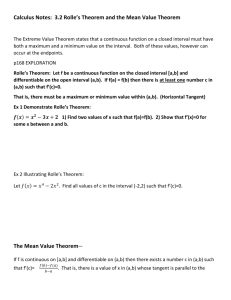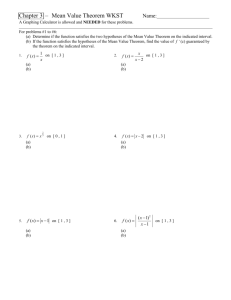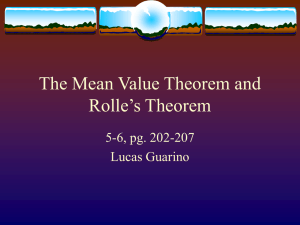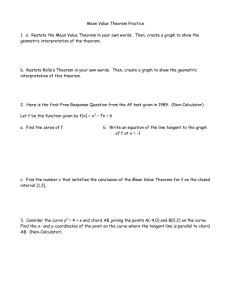Mean Value Theorem and Rolles Theorem Intro
advertisement
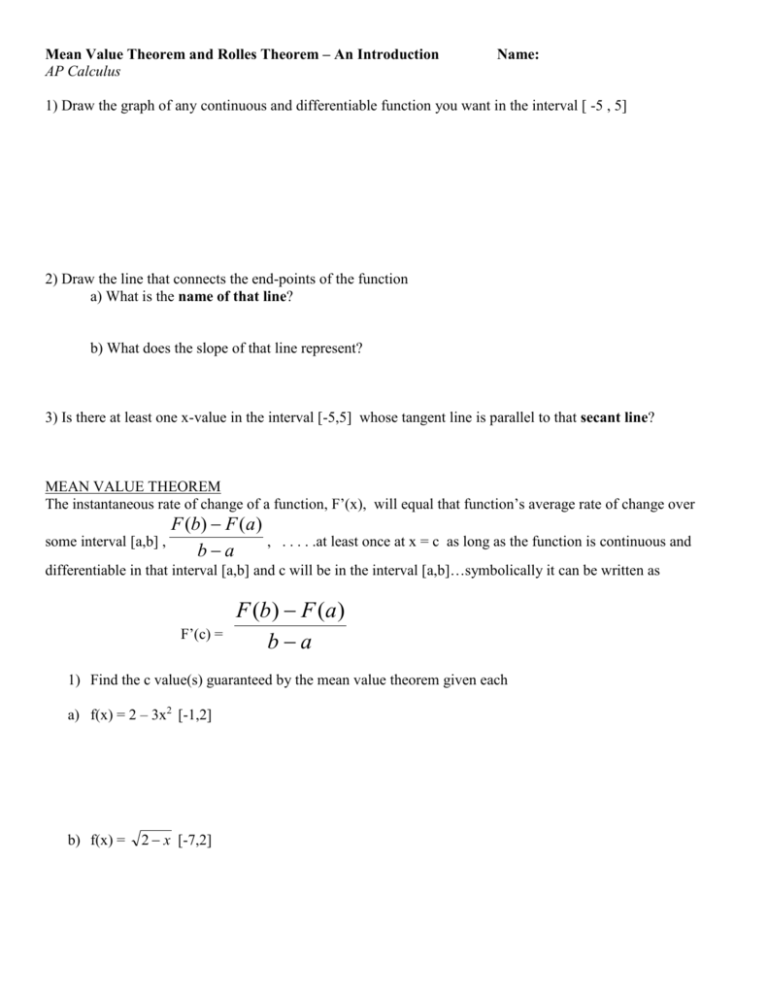
Mean Value Theorem and Rolles Theorem – An Introduction AP Calculus Name: 1) Draw the graph of any continuous and differentiable function you want in the interval [ -5 , 5] 2) Draw the line that connects the end-points of the function a) What is the name of that line? b) What does the slope of that line represent? 3) Is there at least one x-value in the interval [-5,5] whose tangent line is parallel to that secant line? MEAN VALUE THEOREM The instantaneous rate of change of a function, F’(x), will equal that function’s average rate of change over some interval [a,b] , F (b) F (a ) , . . . . .at least once at x = c as long as the function is continuous and ba differentiable in that interval [a,b] and c will be in the interval [a,b]…symbolically it can be written as F’(c) = F (b) F (a ) ba 1) Find the c value(s) guaranteed by the mean value theorem given each a) f(x) = 2 – 3x2 [-1,2] b) f(x) = 2 x [-7,2] c) f(x) = ln(2x+1) [0, e 1 ] 2 d) a. Why wouldn’t the mean value theorem apply to f ( x) x 1 on [-1,2]? x 1 3) A special case of the mean value theorem is called Rolle’s theorem and it is basically the mathematics behind the phrase “what goes up must come down” Rolle’s theorem states: Given a function f(x), if it is continuous and differentiable over the closed interval [a,b] and f(a) = f(b) then there is at least one point x = c where f (c) 0 . a) Can you see how Rolle’s theorem is a special case of the MEAN VALUE THEOREM? Discuss or show how… b) Determine if Rolle’s theorem applies and if it does, use it to determine the c-value guaranteed given 2 3 f(x) = x 1 [-8,8]



